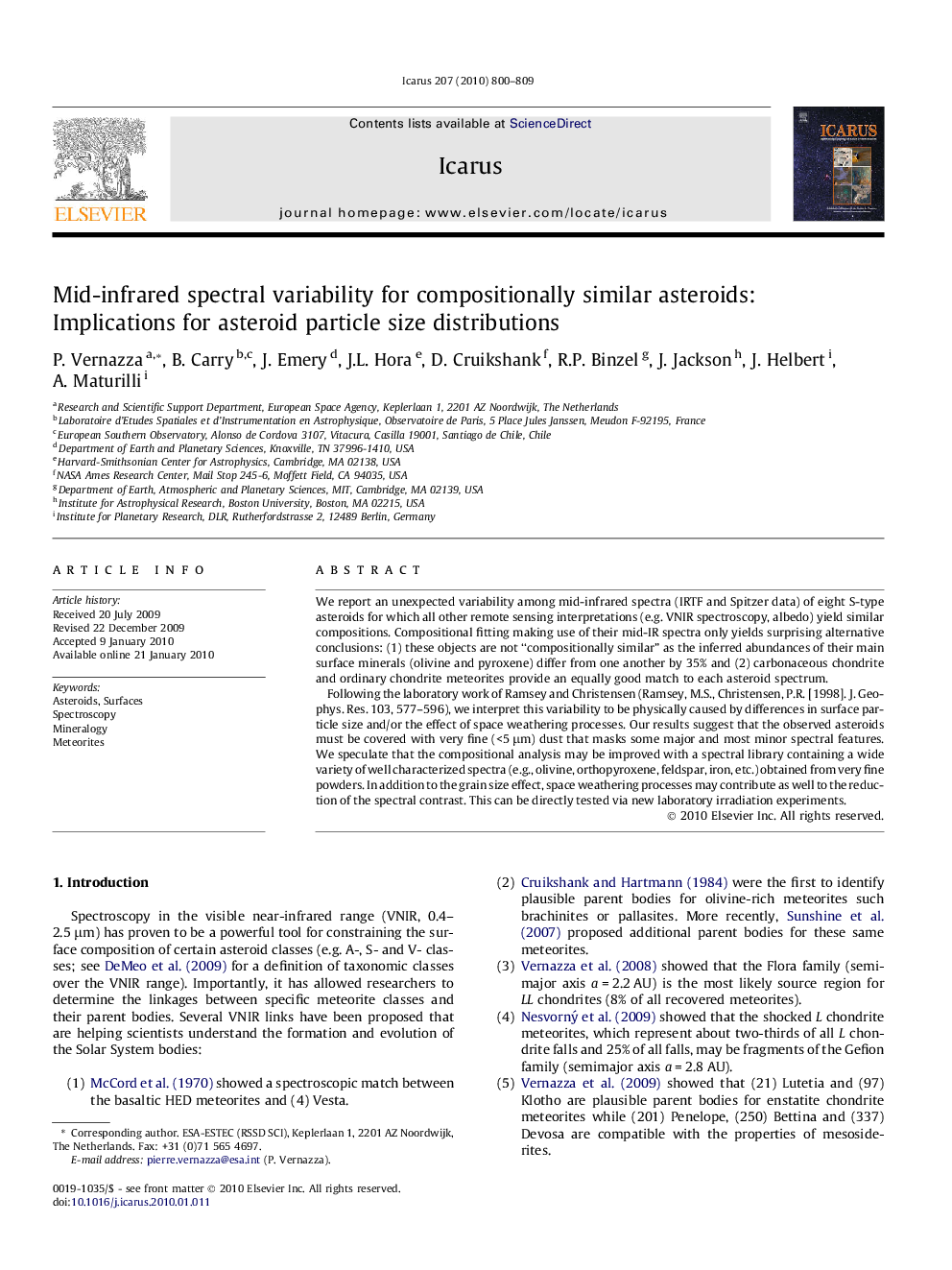| Article ID | Journal | Published Year | Pages | File Type |
|---|---|---|---|---|
| 1774285 | Icarus | 2010 | 10 Pages |
We report an unexpected variability among mid-infrared spectra (IRTF and Spitzer data) of eight S-type asteroids for which all other remote sensing interpretations (e.g. VNIR spectroscopy, albedo) yield similar compositions. Compositional fitting making use of their mid-IR spectra only yields surprising alternative conclusions: (1) these objects are not “compositionally similar” as the inferred abundances of their main surface minerals (olivine and pyroxene) differ from one another by 35% and (2) carbonaceous chondrite and ordinary chondrite meteorites provide an equally good match to each asteroid spectrum.Following the laboratory work of Ramsey and Christensen (Ramsey, M.S., Christensen, P.R. [1998]. J. Geophys. Res. 103, 577–596), we interpret this variability to be physically caused by differences in surface particle size and/or the effect of space weathering processes. Our results suggest that the observed asteroids must be covered with very fine (<5 μm) dust that masks some major and most minor spectral features. We speculate that the compositional analysis may be improved with a spectral library containing a wide variety of well characterized spectra (e.g., olivine, orthopyroxene, feldspar, iron, etc.) obtained from very fine powders. In addition to the grain size effect, space weathering processes may contribute as well to the reduction of the spectral contrast. This can be directly tested via new laboratory irradiation experiments.
